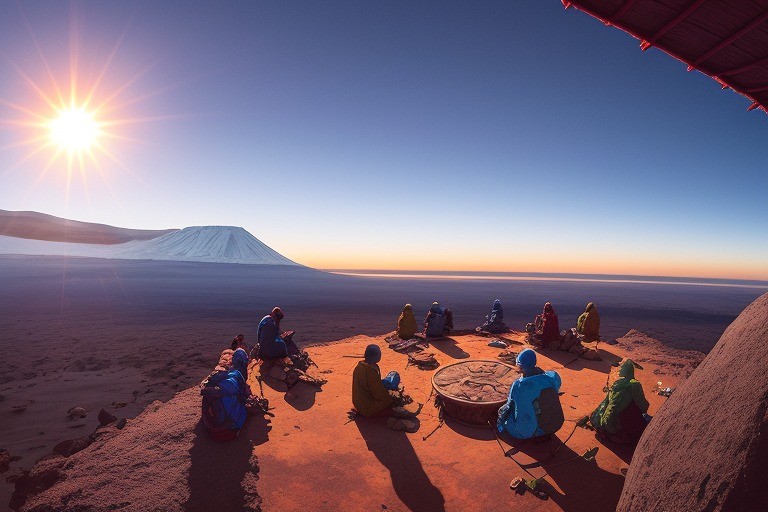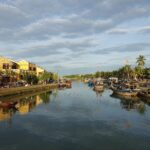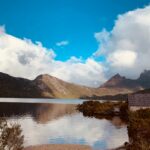Mount Kilimanjaro, Africa’s highest peak, rises majestically in Tanzania, beckoning adventurers from across the globe. Scaling its lofty heights is a journey of a lifetime, an awe-inspiring adventure that not only promises stunning natural beauty but also a chance to immerse yourself in the warm embrace of Tanzanian culture. This essay will guide adventurous travelers on this epic journey, from the practicalities of travel and currency to the thrill of local adventures, ensuring a memorable and rewarding experience.

Travel and Currency
Your journey begins at Kilimanjaro International Airport. The Tanzanian Shilling (TZS) is the local currency, but USD is widely accepted. Ensure you have some local currency on hand for small purchases. It’s advisable to exchange money at the airport or major cities. ATMs are also available, but it’s wise to inform your bank about your travel plans to avoid any card issues.
Accommodation
Tanzania offers a range of accommodation options, from budget hostels to luxurious lodges. Arusha, a popular base for Kilimanjaro treks, boasts numerous hotels. Moshi, another starting point, provides a variety of lodging choices. For those desiring a more rustic experience, camping on the mountain is an option.
Adventure Awaits
Nestled within Kilimanjaro National Park, Africa’s rooftop is a treasure trove of adventure. The park offers multiple routes to conquer the majestic Mount Kilimanjaro, each with its own unique appeal. Your choice of route will significantly influence your experience and the stunning landscapes you encounter.
The Marangu Route, affectionately known as the “Coca-Cola Route,” beckons trekkers with its relatively moderate difficulty. It’s a popular choice for those embarking on their first Kilimanjaro ascent. The Marangu Route, marked by well-trodden pathways, features mountain huts along the way, providing comfortable resting spots for weary adventurers. Trekkers can expect to traverse dense rainforests, undulating moorlands, and the stark lunar landscape of the saddle, offering a diverse range of terrains to explore.

On the other hand, the Machame Route, known as the “Whiskey Route,” is tailored for the adventurer seeking a more challenging and visually captivating experience. This route stands out for its breathtaking vistas, which reveal Kilimanjaro’s awe-inspiring beauty in all its glory. The Machame Route demands a higher level of fitness and adaptability, as it presents trekkers with steeper inclines and longer walking distances. However, the effort is richly rewarded with panoramic views of the mountain’s towering peaks, the Shira Plateau, and the expansive plains of the African savannah.
Your choice of route should align with your trekking experience, fitness level, and the duration you desire for your Kilimanjaro adventure. Each route carries its own set of charms and challenges, making your ascent a personalized journey. Whether you opt for the well-trodden trails of the Marangu Route or the rugged, untamed paths of the Machame Route, the summit of Kilimanjaro awaits, promising an experience that will etch itself into your memory as a truly extraordinary adventure.
Local Etiquette and Culture
Tanzania is renowned for its warm hospitality. Embrace the local customs by greeting people with “Jambo” and “Karibu” (hello and welcome). Dress modestly, especially in rural areas and villages. Engaging with locals is encouraged; it’s an opportunity to learn about their customs, traditions, and way of life. Always ask for permission before taking photos of individuals.

Places to Visit
Before embarking on your Kilimanjaro expedition, it’s worth taking some time to explore the enchanting towns of Arusha and Moshi. These vibrant urban centers, nestled in the shadow of the majestic mountain, offer a delightful introduction to Tanzanian life and culture.
Arusha – Gateway to Adventure
Arusha, often dubbed the “Geneva of Africa,” serves as a bustling hub for travelers embarking on Kilimanjaro treks and safari adventures. This lively city boasts a unique blend of modern amenities and traditional African charm. Stroll through the vibrant local markets, where a kaleidoscope of colors and aromas awaits. You’ll find an array of handcrafted souvenirs, exotic spices, and fresh produce, making it an ideal place to pick up mementos of your Tanzanian journey.
Arusha is also home to a thriving coffee culture. Take a guided tour of a coffee farm and learn about the journey from bean to brew. Sip on freshly roasted coffee and gain insight into the art of coffee production, a quintessential Tanzanian experience.
Moshi – A Quaint Gateway
Moshi, often the starting point for Kilimanjaro treks, exudes a distinct charm. This town, with its picturesque views of the mountain, offers a more relaxed and intimate atmosphere. Explore the local culture at the Kilimanjaro Native Cooperative Union (KNCU) Cultural Tourism Program, where you can interact with Chagga tribespeople, known for their intricate banana beer-making process and traditional dances.
Serengeti National Park and Ngorongoro Crater
For a wildlife extravaganza, venture to the nearby Serengeti National Park and Ngorongoro Crater. The Serengeti is famed for its annual wildebeest migration, a spectacular natural phenomenon. Witness vast herds of wildlife in their natural habitat, from lions and leopards to elephants and zebras. The Ngorongoro Crater, a UNESCO World Heritage site, offers a unique ecosystem within a collapsed volcano. It’s home to a remarkable concentration of wildlife, providing an unforgettable safari experience.
Zanzibar – Island Paradise
After conquering Kilimanjaro, reward yourself with a visit to Zanzibar, a tropical paradise boasting pristine beaches, azure waters, and a rich cultural tapestry. Explore the labyrinthine alleys of Stone Town, a UNESCO World Heritage site, and visit the House of Wonders and the Sultan’s Palace. Relax on the powdery sands of Nungwi Beach, go snorkeling in the coral reefs, and indulge in the island’s delectable seafood. Zanzibar is the perfect place to unwind and reflect on your Kilimanjaro adventure.
These destinations complement your Kilimanjaro trek, offering a multifaceted Tanzanian experience that combines nature, culture, and relaxation. Each place has its own unique character, ensuring that your journey through Tanzania is an enriching and unforgettable one.
Eating Local Cuisine
Tanzanian cuisine reflects its diverse cultures. Don’t miss out on trying “ugali” (maize porridge) and “nyama choma” (grilled meat). Local markets offer a variety of fresh fruits, and street food vendors serve delicious snacks. “Chai” (tea) is a staple, and the coffee is some of the best you’ll ever taste. Dining at local restaurants lets you savor authentic Tanzanian flavors.
Local Travel Plan
Your journey up Kilimanjaro should be undertaken with a registered tour company. Guides, porters, and cooks accompany trekkers. Acclimatization is key, so take it slow. Enjoy the changing landscapes, from lush rainforests to alpine deserts. Stay hydrated, eat well, and rest adequately to combat altitude sickness. Reach the summit, Uhuru Peak, just in time for sunrise—it’s an indescribable experience.
Conclusion
Scaling Kilimanjaro is not just a physical challenge; it’s an immersion into the heart of Tanzania. It’s a triumph of endurance and a celebration of the human spirit. As you stand atop Africa’s rooftop, surrounded by glaciers and vast vistas, you’ll feel a profound sense of accomplishment. The journey is as important as the summit itself. Kilimanjaro doesn’t just offer a physical ascent; it provides a cultural and emotional one. It’s an opportunity to bond with nature, learn from locals, and test your limits. So, if you’re ready for the adventure of a lifetime, pack your bags, lace up your boots, and set your sights on scaling Kilimanjaro. It’s a journey you’ll cherish forever.




